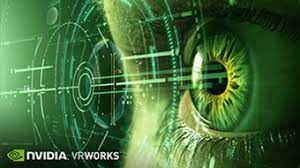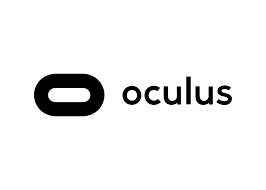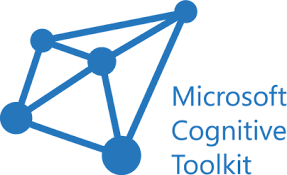Virtual reality (VR) has come a long way in recent years, becoming more sophisticated and immersive thanks to advancements in artificial intelligence (AI) technology. AI tools have revolutionized the way we interact with VR environments, making them more intelligent, responsive, and personalized. From natural language processing to machine learning, there is a wide range of AI tools that developers can leverage to enhance VR applications and create more engaging experiences for users.
In this blog post, we'll explore some of the best AI tools for virtual reality and how they can be used to create more immersive and interactive experiences. Whether you're developing VR applications for gaming, education, healthcare, or other industries, understanding the potential of AI tools can help you take your projects to the next level. So let's dive in and discover the exciting possibilities that the intersection of AI and VR can offer.
Unity

Unity is a powerful AI tool widely used in the game development industry. With its advanced features, Unity allows developers to create intelligent and responsive virtual environments that can adapt to user behavior. One of the main advantages of Unity is its machine learning toolkit, which enables developers to train and deploy machine learning models within the Unity Editor. This feature makes it possible to create intelligent agents that can interact with users and the environment, adding a new level of immersion to the virtual world. Moreover, Unity provides various pre-built components, including behavior trees, decision trees, and finite state machines, making it easier for developers to create complex AI systems without requiring extensive coding knowledge.
Pros
Cons
Overall Rank
Unreal Engine

Unreal Engine AI tool is an impressive piece of software that allows game developers to create intelligent and responsive non-playable characters (NPCs) in their games. With the tool, developers can design NPCs that can make decisions, react to the environment, and interact with the player in a more realistic and dynamic way. The tool is built with advanced machine learning algorithms that can analyze player behavior and adapt the game's AI accordingly. Additionally, the Unreal Engine AI tool can be used in a wide range of game genres, including shooters, RPGs, and strategy games. It provides developers with an easy-to-use interface for designing and implementing AI, making it an essential tool for any game development project.
Pros
Cons
Overall Rank
IBM Watson

IBM Watson is a powerful artificial intelligence tool that is capable of understanding and analyzing natural language data. It uses machine learning algorithms to interpret vast amounts of unstructured data, such as text, images, and audio, and provide meaningful insights that can help businesses make informed decisions. With its advanced natural language processing capabilities, Watson can understand context, sentiment, and intent, allowing it to analyze customer feedback, conduct sentiment analysis, and even generate personalized recommendations. Additionally, Watson can be customized to fit the needs of different industries and businesses, making it a versatile tool for companies looking to leverage AI technology.
Pros
Cons
Overall Rank
NVIDIA VRWorks

NVIDIA VRWorks AI is a tool that uses the power of artificial intelligence to enhance virtual reality experiences. It includes a suite of features that can be integrated into VR applications, such as intelligent supersampling, which uses machine learning to upscale images in real-time for a smoother and more detailed VR experience. It also includes deep learning-based anti-aliasing, which improves image quality by reducing jagged edges and flickering. Additionally, VRWorks AI includes tools for simulating physics, such as object and cloth simulation, which can make VR environments feel more realistic and immersive.
Pros
Cons
Overall Rank
Amazon Sumerian

Amazon Sumerian is a cloud-based tool that enables users to create and publish augmented reality (AR), virtual reality (VR), and 3D applications without requiring any specialized programming knowledge. Sumerian offers an easy-to-use interface and drag-and-drop functionality that allows users to add objects, create animations, and build interactive scenes effortlessly. With Sumerian, users can also integrate voice recognition and natural language processing capabilities to build conversational interfaces that can understand and respond to users in real-time. Additionally, Sumerian allows users to publish their creations to various platforms, including VR headsets, mobile devices, and web browsers, making it an excellent tool for businesses and individuals looking to build engaging, immersive experiences for their customers or audiences.
Pros
Cons
Overall Rank
Google VR SDK

Google VR SDK AI tool is a software development kit that allows developers to create virtual reality (VR) and augmented reality (AR) applications for Android and iOS devices. With this tool, developers can use Google's advanced artificial intelligence (AI) capabilities to enhance the user experience of their VR and AR applications. The AI tool allows developers to add features such as speech recognition, image recognition, and natural language processing to their apps, which can be used to create more engaging and immersive experiences for users. Additionally, the tool provides access to a wide range of 3D assets and tools, making it easier for developers to create high-quality VR and AR experiences without the need for specialized knowledge or equipment.
Pros
Cons
Overall Rank
Houdini

Houdini AI is a cutting-edge tool that uses artificial intelligence to create complex simulations and animations with ease. This software harnesses the power of machine learning algorithms to analyze and optimize data, allowing users to create incredibly realistic graphics with minimal effort. Houdini AI can be used to generate everything from simple 3D shapes to complex natural phenomena like weather patterns and fluid dynamics. With its intuitive interface and powerful features, this tool is an essential asset for anyone involved in the entertainment industry or digital design.
Pros
Cons
Overall Rank
Oculus SDK

The Oculus SDK AI tool is a powerful tool that enables developers to create immersive and interactive virtual reality experiences. The tool provides a range of features that enable developers to create realistic and interactive environments, including spatial audio, advanced rendering techniques, and intuitive controls. The tool also includes machine learning capabilities that enable developers to create intelligent, adaptive experiences that can learn and respond to user behavior and preferences. By leveraging the power of AI, developers can create VR experiences that are more engaging, personalized, and responsive, resulting in a more immersive and satisfying experience for users.
Pros
Cons
Overall Rank
Blender

Blender AI tool is a cutting-edge software that combines the power of artificial intelligence with 3D modeling, animation, and rendering. This tool provides users with the ability to create stunning visual effects, realistic simulations, and advanced animations with ease. Blender AI tool offers various features such as real-time rendering, a customizable interface, and a vast array of plugins, making it a versatile tool for professionals and hobbyists alike. With the help of machine learning algorithms, Blender AI tool can automate repetitive tasks, streamline workflows, and create more lifelike animations and simulations. The integration of AI technology into Blender has opened up new possibilities for artists and designers to push the boundaries of creativity and create content that was once impossible.
Pros
Cons
Overall Rank
Microsoft Cognitive Toolkit

Microsoft Cognitive Toolkit (CNTK) is an open-source, deep learning toolkit for building artificial intelligence models. CNTK offers a distributed computing system that enables high-speed training of deep neural networks across multiple CPUs and GPUs. It supports various programming languages such as Python, C#, and C++, making it flexible and adaptable for a wide range of applications. Additionally, CNTK includes several built-in features that allow developers to easily implement complex models such as recurrent neural networks, convolutional neural networks, and deep residual networks. Overall, Microsoft Cognitive Toolkit is a powerful AI tool that provides developers with the necessary tools to create and train complex neural networks.
Pros
Cons
Overall Rank
Theano

Theano is a powerful deep learning library that allows developers to efficiently define, optimize, and evaluate mathematical expressions, especially ones with multi-dimensional arrays. It was developed by the Montreal Institute for Learning Algorithms (MILA) at the University of Montreal, and has been used by numerous researchers and companies to develop cutting-edge machine learning models. One of the key advantages of Theano is its ability to perform symbolic differentiation, which allows for automatic differentiation of complex mathematical expressions. This not only simplifies the process of defining and optimizing models, but also results in faster computations. Theano also supports GPU acceleration, making it possible to train deep learning models on high-performance computing clusters. Overall, Theano is a versatile and powerful tool for researchers and developers in the field of machine learning.
Pros
Cons
Overall Rank
Torch

Torch is an open-source machine learning framework that is highly efficient, fast, and flexible. Developed in Lua programming language, Torch provides an easy-to-use interface for building various types of neural networks. Torch comes with an extensive collection of pre-built models and a suite of tools for data processing, visualization, and debugging, making it an excellent choice for researchers, developers, and enthusiasts alike. Additionally, Torch also supports distributed computing, allowing you to train models on multiple GPUs or even across multiple machines. Overall, Torch is an excellent tool for deep learning, and its simplicity and flexibility make it an ideal choice for researchers and developers who want to build custom models.
Pros
Cons
Overall Rank
Caffe

Caffe is a deep learning framework that is primarily used for image classification, segmentation, and other visual tasks. It has a simple and modular architecture, making it easy to use and extend. Caffe is designed to be efficient, making use of GPUs to speed up training and inference times. It is also highly portable, allowing it to be run on a variety of platforms, including CPUs, GPUs, and mobile devices. With its extensive library of pre-trained models and support for a wide range of datasets, Caffe is a popular choice for researchers and developers working on computer vision projects.
Pros
Cons
Overall Rank
Keras

Keras is an open-source, user-friendly deep learning library that enables developers to easily build and deploy neural networks. Its high-level API allows for fast prototyping and experimentation with various neural network architectures. Keras supports both CPU and GPU computation, making it suitable for use on a variety of platforms. It also includes pre-trained models and various useful tools for data processing and visualization. One of Keras' most significant advantages is its compatibility with multiple backend engines, including TensorFlow, CNTK, and Theano, making it a highly flexible and adaptable tool for deep learning tasks.
Pros
Cons
Overall Rank
In conclusion, the intersection of AI and virtual reality (VR) has created exciting opportunities for immersive experiences that were once beyond our imagination. The integration of AI tools into VR is transforming the way we interact with virtual environments, making them more intelligent, dynamic, and personalized. From natural language processing and computer vision to machine learning and deep learning, there is a wide range of AI tools that can enhance VR applications. The best AI tools for VR depend on the specific needs and goals of your project. However, some of the most useful AI tools for VR include voice and gesture recognition, object detection and tracking, predictive analytics, and natural language processing. These tools enable developers to create more immersive and engaging VR experiences, increase user engagement, and improve user satisfaction. As the adoption of VR continues to grow, we can expect to see more innovation and integration of AI tools into VR applications. The potential for these technologies to revolutionize gaming, education, healthcare, and other industries is immense. Therefore, it is essential to stay up-to-date with the latest AI tools and trends to take full advantage of the benefits of these transformative technologies.
